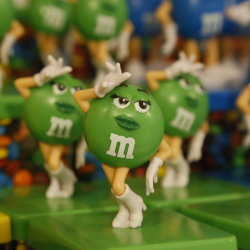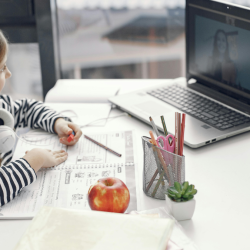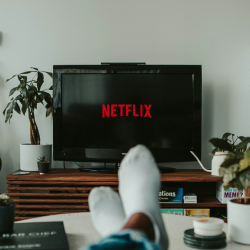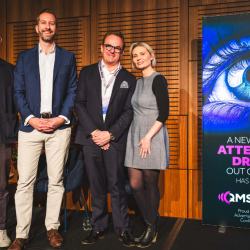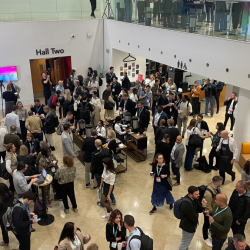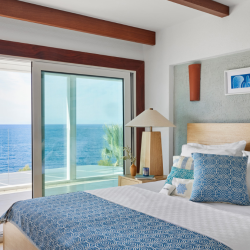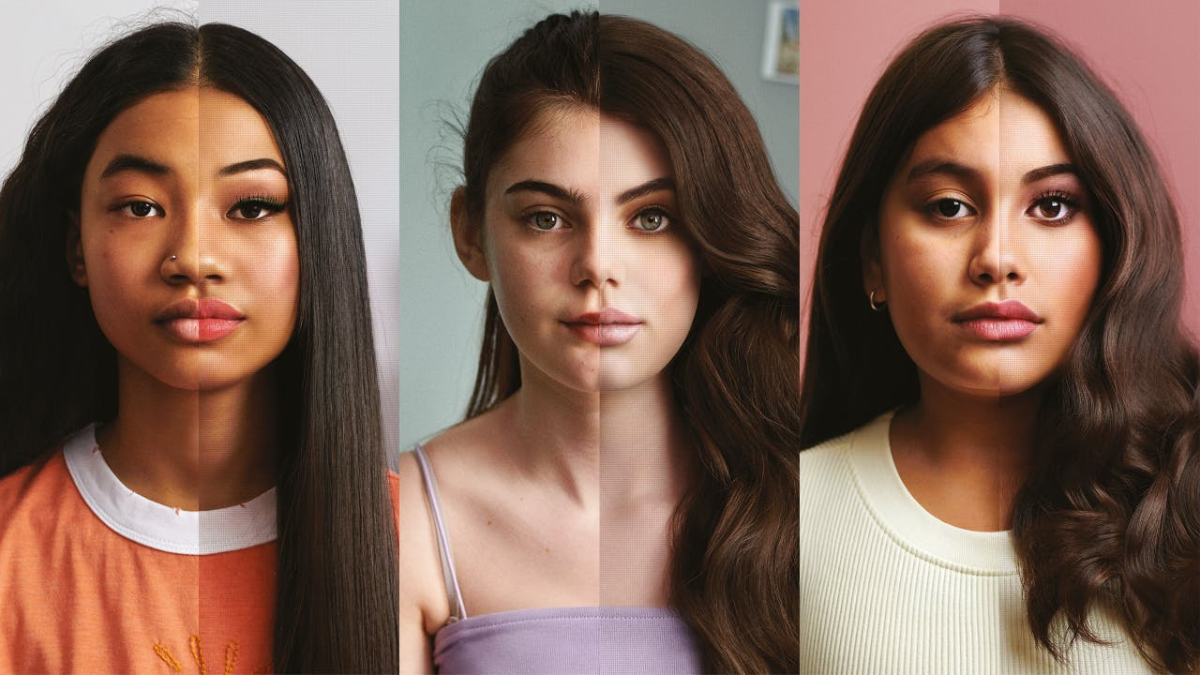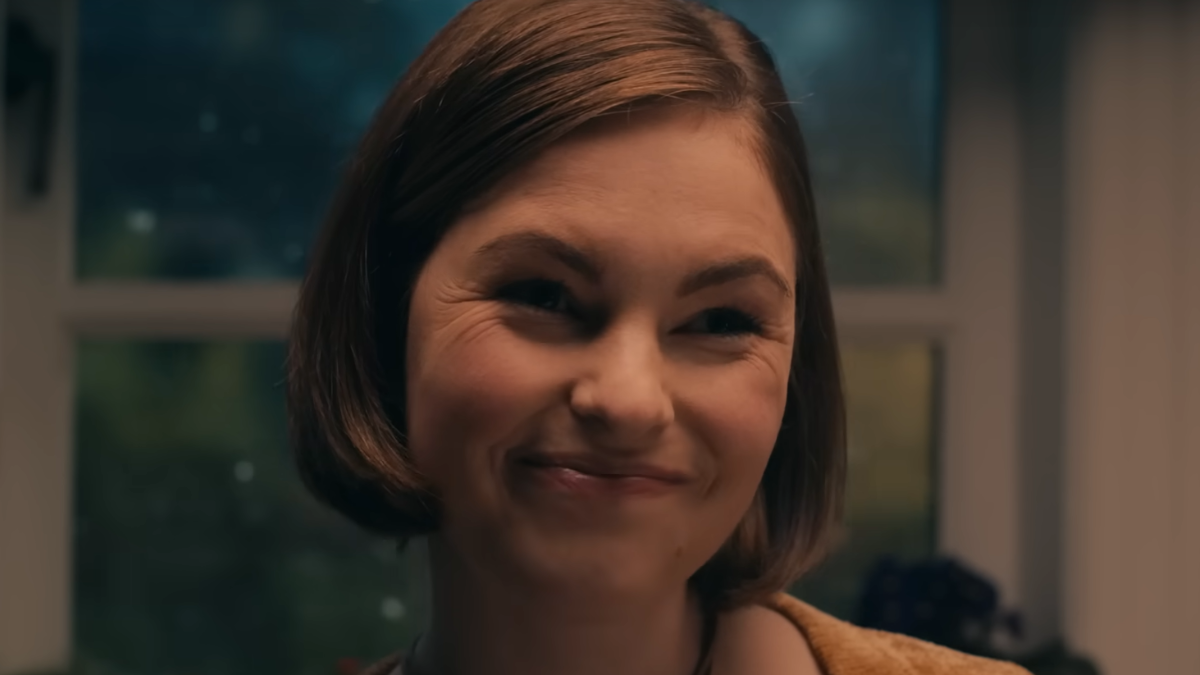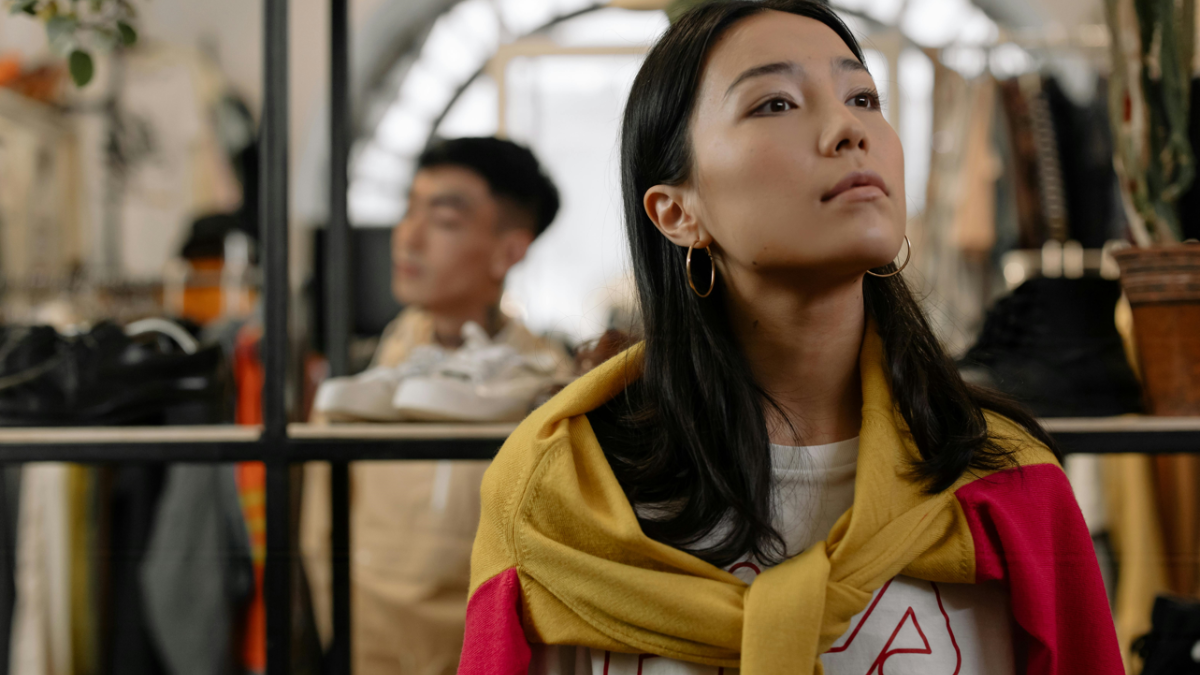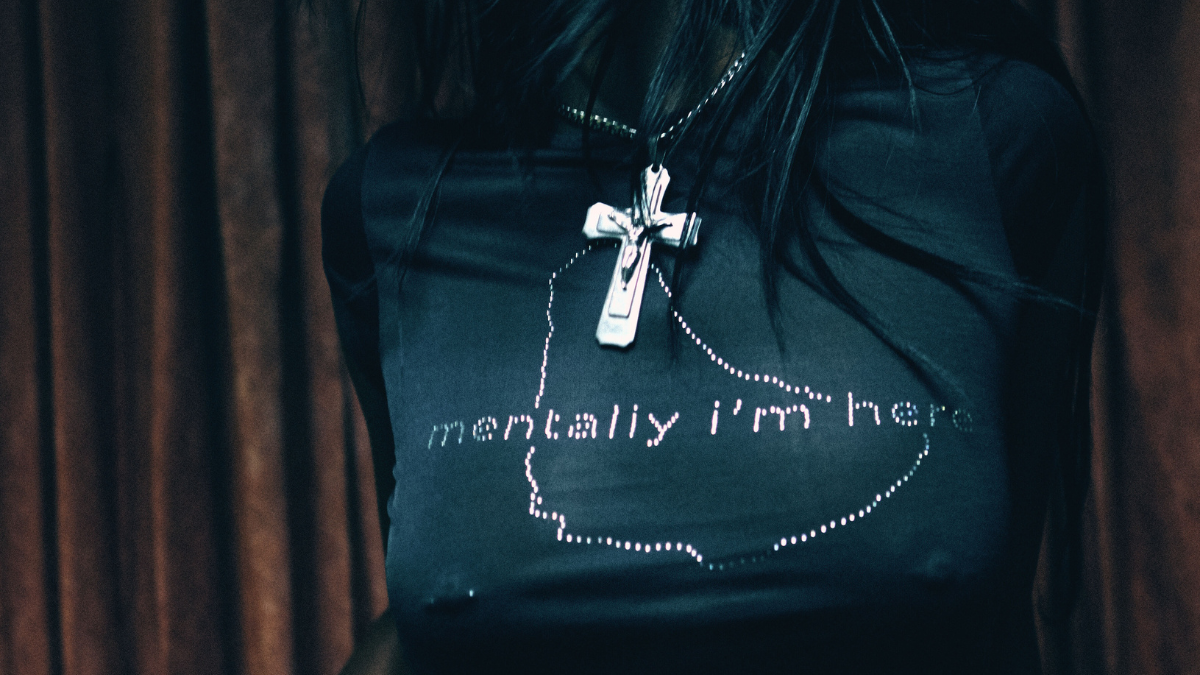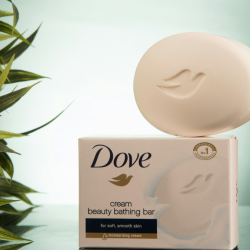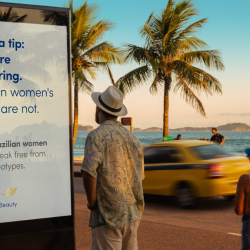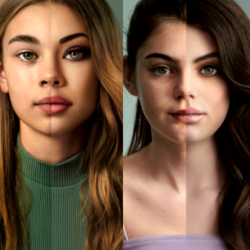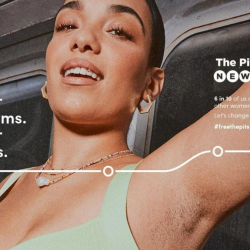Daniel Fisher is the Global Executive Creative Director at Ogilvy, working with clients Dove. We met him at D&AD (after his ‘Beautifully simple craft in the campaign for real beauty’ panel) to find out how Dove has continued to adapt while keeping it’s ‘real beauty’ message at the fore.
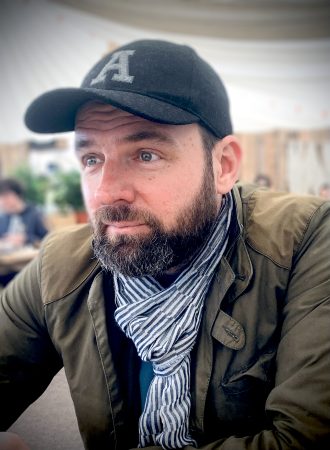
In terms of work on Dove… there’s been sourcing selfies and turning a campaign around in in 6 days of lockdown (Courage is Beautiful), sensitively working with young girls to retouch their own selfies (Reverse Selfie), and embracing innovative deep fake techn (Toxic Influence).
What is your philosophy when it comes to creating impactful and meaningful campaigns? How do you achieve that, especially, for example, when you had to develop a campaign in 6 days in response to the pandemic?
When developing campaigns, especially like the one we created during Covid, Courage is Beautiful, our philosophy revolves around being responsive and impactful. We strive to go beyond the norm and deliver campaigns that resonate with people in a fast-paced manner.
It was indeed a unique situation that called for a departure from our usual process. With the world in lockdown and uncertainty all around, we felt it wasn’t appropriate to push marketing messages solely focused on product promotion. We wanted to do something responsible and be a brand that provide reassurance. We stumbled upon powerful images emerging on platforms like Reddit, initially from China, and then spreading organically. These images featured healthcare professionals, predominantly women, wearing masks and revealing the marks left on their faces. To us, these images captured the essence of real beauty, highlighting that beauty is not just about appearance but also about behaviour. It felt like a perfect fit for our brand. So, without going through our traditional research and approval processes, we swiftly decided to act.
Given the urgency and the fast-moving nature of the situation, we abandoned traditional timelines and processes. We worked tirelessly across time zones, collaborating with teams around the world, including the US and Europe. It was a 24/7 endeavour, and even though we were physically restricted due to lockdown, we adapted to remote work seamlessly. The lines between client and team blurred as we got to know each other on a personal level, sharing our virtual workspaces and even discussing our dressing gowns. It became an authentic experience of real beauty, where we worked non-stop, even waking up at 7 am on a Sunday, all united in our mission. The emotions brought forth by this unprecedented situation fuelled our creative process, and within five days, we were able to deliver a campaign that resonated with people worldwide.
Let’s discuss another campaign, ‘Reverse Selfie’. What were the challenges and lessons learned from that one?
In this case is important to delve into the challenges faced, especially considering the unique circumstances we encountered. The team embarked on that project during lockdown, which posed significant obstacles. The decision was made to postpone and revisit them later in the year. However, even during the rescheduled period, difficulties persisted. For instance, the day before the first shoot, the chosen girl, Grace, contracted Covid, causing disruptions to the production schedule. Also, there were instances where locations had to be changed due to evolving regulations and limitations imposed by the pandemic.
Another crucial aspect was finding the right person to participate. The team sought a girl who would confidently share her own true story, aligning with the campaign’s message of ‘real beauty.‘ It was essential to ensure that they could authentically convey their experiences to a global audience.
The motivation behind these campaigns stemmed from a desire to address the evolving landscape of beauty standards. In examining the contemporary climate, Dove acknowledged the significant shifts since 2006 when the focus was primarily on magazine and television portrayals. Nowadays, the impact of social media and readily available image manipulation tools on mobile phones has made these ideals more pervasive.
With this understanding, the team sought to evolve the Dove’s Real Beauty platform. Initially considering shooting with a young girl rather than a traditional model, they recognized that having her tell her own story would be a more authentic approach. Consequently, the idea emerged to have a girl retouch her own selfies, showcasing the pressures and challenges the youngest face in altering their appearance. This approach mirrored the reverse of what Dove did in 2006, adding a compelling dimension to the campaign.
The stories shared by these girls, such as ageing themselves by eight years or transforming their appearance drastically, highlight the heartbreaking reality of societal expectations and the influence of technology on self-perception. It is astonishing how young girls, at the age of 10 or 12, possess the ability to manipulate images. We wanted to raise awareness of the negative impact of social media and empower young girls to redefine beauty on their own terms.
Can you tell us about any upcoming campaigns or initiatives you have in the works?
Currently, we are focusing on the rollout of our Cost of Beauty campaign, which addresses the detrimental effects of social media on vulnerable young individuals. We can consider it as the ‘act 3‘ of a series of beauty campaigns, where ‘act one‘ was the Reverse Selfie campaign, while ‘act two‘ was the Toxic Influence one. In the Cost of Beauty, we had the opportunity to meet the girls for the first time, shifting the perspective from being subjects to storytellers.
The fight against the negative impact of social media on beauty standards is an ongoing battle, one that we may never truly win as a brand alone. However, our objective is to raise awareness, spark conversations, and ultimately drive change. We believe that raising awareness and initiating conversations about this issue is crucial. While we recognize the positive aspects of social media, there is a need for responsible regulation, especially regarding the exposure of young people to harmful content. Our goal is to make social media a safer space for young women and girls, who are particularly vulnerable to societal pressures and unrealistic standards of beauty.
How do you plan to raise awareness and combat the negative impact of social media?
We recognize the power of social media and its positive aspects. However, the issue arises when vulnerable young people, like Mary in the Cost of Beauty film, are exposed to unregulated content without any safeguards or filters. The algorithms used by social media platforms often amplify harmful messages, which is particularly concerning for young users. There is a need for regulation and better enforcement of policies, especially when it comes to protecting young children who should not be accessing certain platforms in the first place. Our goal is not to fight against social media as a whole, but to bring about positive change within that space, making it safer and more empowering for young women and girls.
Are you using social media to fight social media? To combat the toxic culture associated with it?
It’s an interesting question. While we recognize the value of using social media as a platform for change, we faced limitations with certain platforms. For instance, we were not allowed paid support for the Cost of Beauty campaign on some platforms. Nevertheless, the campaign had a significant organic impact. Our focus is not solely on building a presence on social media, but rather on creating positive change within that space, especially in terms of fostering a safer and more empowering environment for young women and girls. Authenticity is crucial in this endeavour, as platforms like TikTok are actively promoting and seeking authentic content.
It’s important to note that social media itself is not solely to blame. While it has its downsides, social media can also be a force for good. The issue lies in how it is used and the lack of proper regulation. Vulnerable young girls often bear the brunt of the negative effects, which is why our focus is on promoting authenticity and creating a safer space for them. We believe that by addressing these concerns and encouraging positive change, we can help shape a more positive and inclusive digital landscape for future generations.
Our theme for May was ‘Leaving a Legacy’. How do you think your campaigns contribute to Dove’s legacy?
We launched the first Real Beauty campaign in 2004, and it has already left a significant impact and created a legacy. Back then, it was revolutionary for a brand to use real people, real women, and real men in their marketing campaigns. Representation wasn’t a common concept in the marketing mix at that time. Over the years, Dove has continued to champion this cause and has become one of the main advocates for promoting real beauty. As we move into an era of rapidly advancing technology, social media, and emerging platforms, Dove aims to take on the fight against harmful beauty standards and manipulation.
However, Dove does not seek exclusivity in this fight. The hope is that other voices will join in to raise awareness and combat the threats that affect consumer well-being. The more people and voices involved, the stronger the impact can be. This is the true legacy Dove envisions, creating a collective movement that brings about positive change in society, particularly in terms of how young girls perceive beauty and navigate the challenges posed by digital media and technology. The shift from the ‘Campaign for Real Beauty‘ to ‘Let’s Change Beauty‘ signifies Dove’s commitment to actively making a difference, not just through discussions, but also by advocating for legislative measures and societal transformations that lead to a better world.
Featured image: Reverse Selfie Campaign / Dove, Ogilvy
